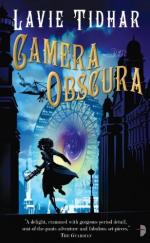|
This section contains 558 words (approx. 2 pages at 300 words per page) |

|
Aristotle (384-322 b.c.) noted the ability of small holes to project images. As he viewed a partial eclipse of the sun, he noticed that an image of the eclipse could be seen on the ground before him through one of the holes of a strainer he held. Eventually, someone noticed that a small hole in the wall of a dark room produced the same effect--an inverted image of the view outside the room appeared on the wall opposite the hole. Thus, the camera obscura ("dark chamber"), which is the direct ancestor of the modern photographic camera, was born.Probably the earliest account of the camera obscura came from an Arabian scholar named Ibn Al-Haitham, known as Alhazen (c. 900). Alhazen not only documented the concept in detail, but also demonstrated the significance of the relationship between the size of aperture and the sharpness of image. For...
|
This section contains 558 words (approx. 2 pages at 300 words per page) |

|


